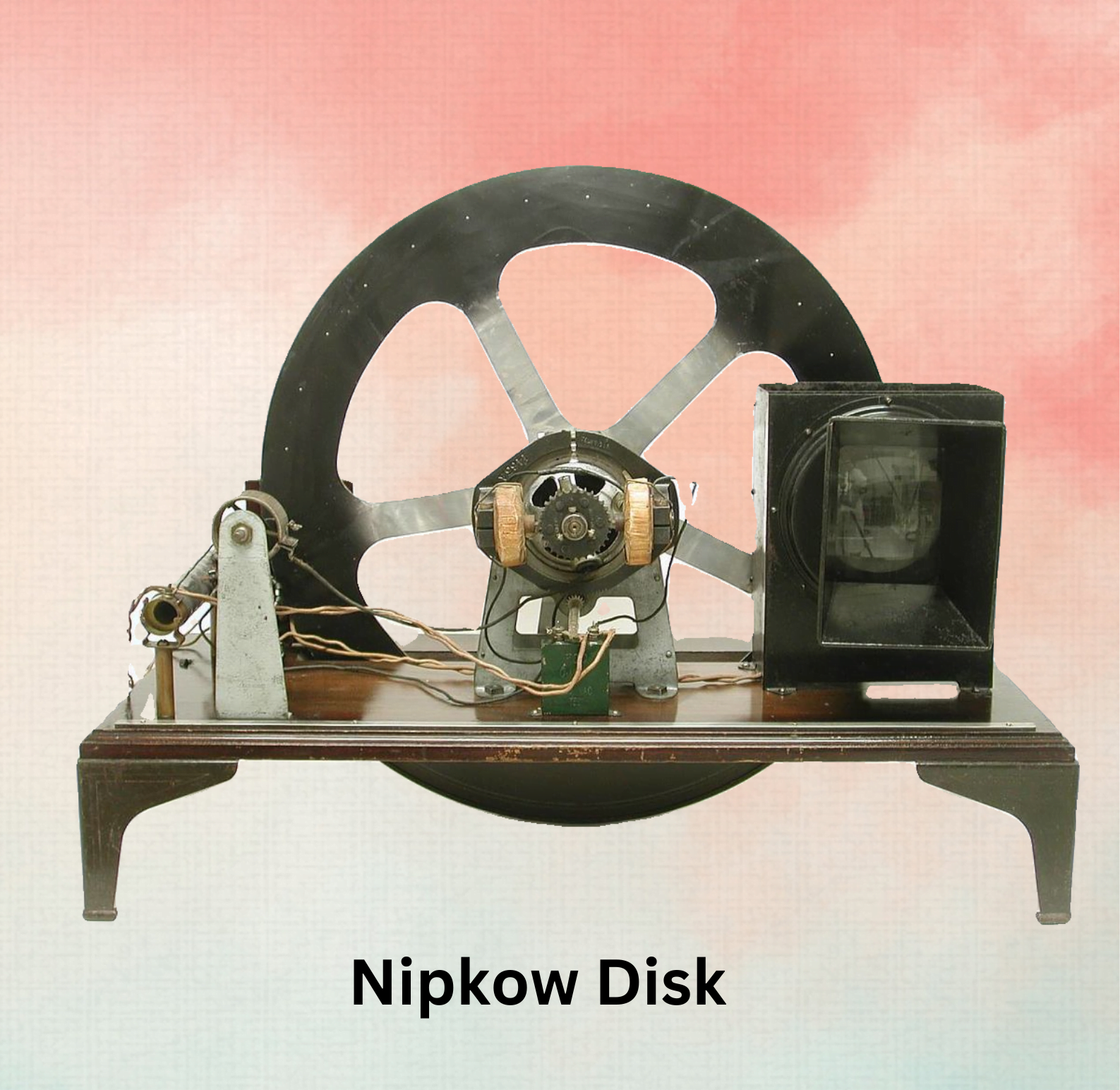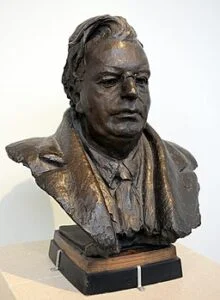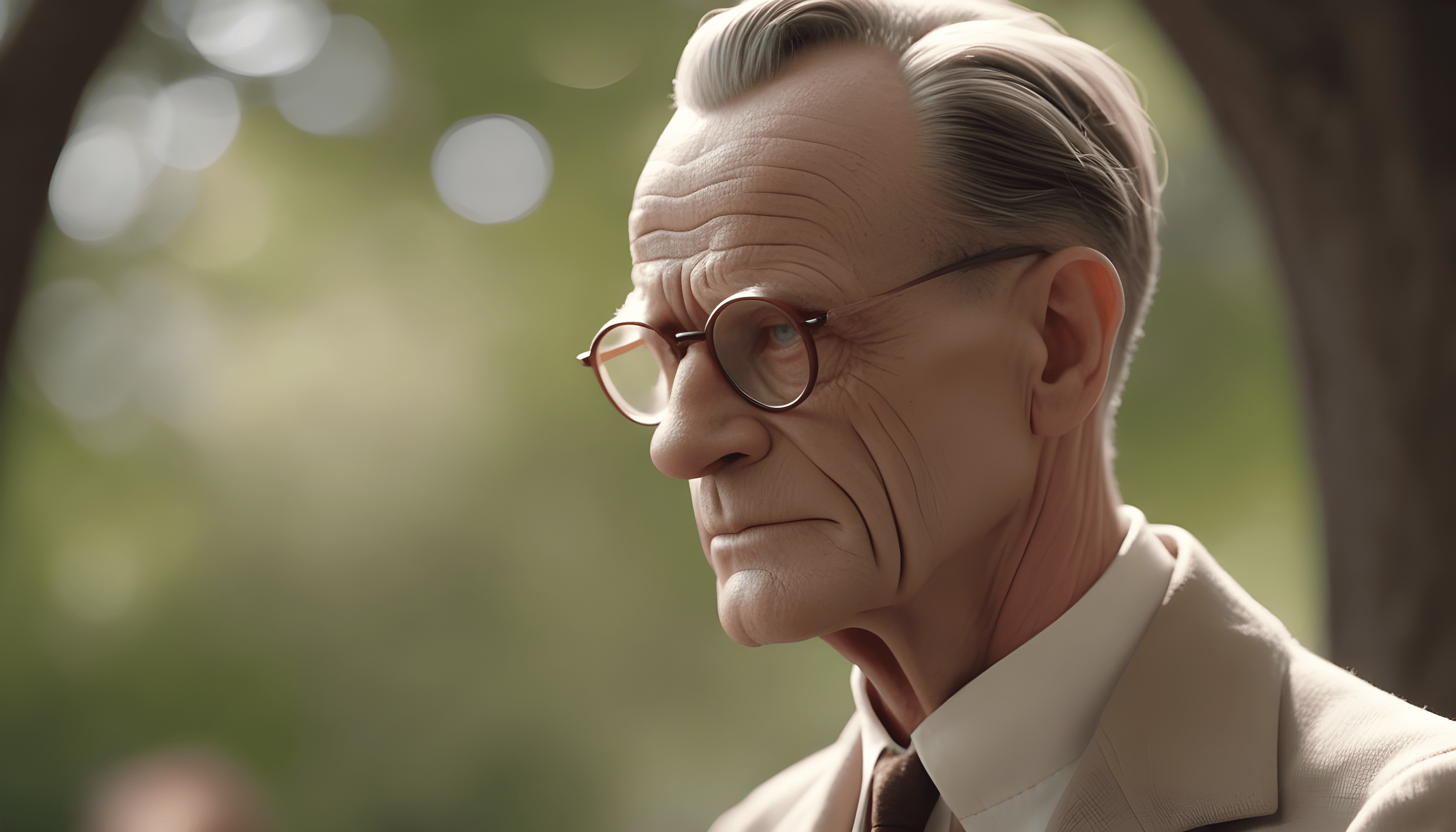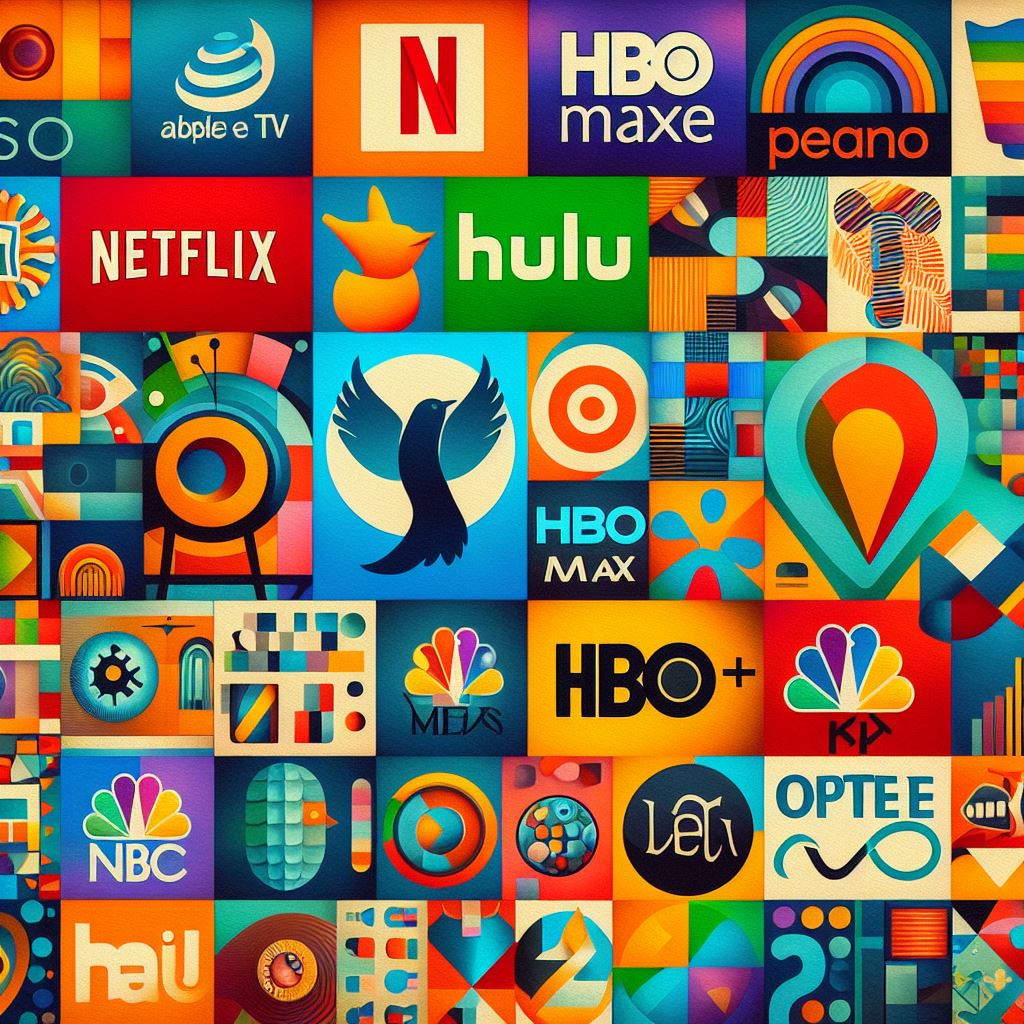Introduction- The Invention of Television
Imagine a world without the flickering glow of your favorite show, the roar of the crowd during a live sporting event, or the heart-wrenching drama unfolding on screen. This was the reality for most of human history until a series of visionary minds dared to dream of a way to transmit moving images over vast distances.
The story of television is not simply a tale of technological advancement, but a captivating journey of perseverance, competition, and the relentless human desire to push the boundaries of possibility. It all began with a spark of curiosity, a question that haunted inventors for decades: Could we capture the fleeting moments of life and share them with the world?
In this blog, we’ll embark on a captivating voyage through the annals of history, uncovering the stories of the brilliant minds who dared to answer that question. We’ll meet visionaries like Paul Nipkow, whose ingenious Nipkow Disk laid the groundwork for image transmission. We’ll delve into the rivalry and collaboration between Philo Farnsworth and Vladimir Zworykin, whose groundbreaking inventions ignited the television revolution. We’ll celebrate the triumphs and setbacks of these trailblazers, piecing together the puzzle of how a flickering dream transformed into the ubiquitous entertainment device we know and love today.
Get ready to be transported back in time, to witness the birth of a technology that will forever change the way we experience the world. Buckle up, and let’s explore the fascinating story of the invention of television.

History of Television
The development of television is a rich history spanning centuries, marked by the contributions of numerous inventors and groundbreaking discoveries. This timeline highlights key milestones that shaped the way we experience the world through television:
17th Century (1673): Athanasius Kircher- Early Ideas Emerge
While the invention of television is often attributed to the late 19th and early 20th centuries, the seeds of this technology were sown centuries earlier. Athanasius Kircher, a 17th-century German polymath and scholar, stands as a fascinating figure in this prehistory. His 1646 book, Ars Magna Lucis et Umbrae (The Great Art of Light and Shadow), described a device using lenses and mirrors to project enlarged images. This concept, though not directly related to television, hints at a yearning for the transmission of images that would resurface throughout history.
Kircher’s work embodied a spirit of scientific curiosity prevalent during the Renaissance. He wasn’t alone in his fascination with image projection. Earlier, in the 1500s, Leonardo da Vinci sketched a camera obscura, a darkened chamber that projected an inverted image of the outside world onto a wall. These early forerunners of television technology, though lacking the ability to transmit moving images, demonstrate a long-standing human desire to capture and share visual experiences.
Interestingly, the pursuit of image transmission wasn’t solely driven by a thirst for entertainment. In the 18th century, for example, French inventor Claude Schaeffer devised a signaling system using mirrors that could transmit coded messages over long distances. While not intended for projecting images, Schaeffer’s work foreshadowed the role of electrical signals in future television technology.
These historical anecdotes provide valuable context for understanding the invention of television. They highlight that the concept of image transmission simmered for centuries before the technical breakthroughs of the late 19th and early 20th centuries. Kircher, da Vinci, and Schaeffer, despite their lack of a working television, represent a lineage of inventors and thinkers whose ideas ultimately paved the way for the flickering images that would revolutionize communication and entertainment.
Further Reading:
- Discuss the scientific principles behind the camera obscura, including da Vinci’s work.
- Athanasius Kircher- Britannica – Provides a biography of Athanasius Kircher and his diverse scientific contributions.
- Television- Wikipedia – Offers a more comprehensive timeline of television’s invention.
May and Smith Spark the Television Revolution (1873)
While household names like Marconi and Zworykin dominate the narrative of television’s invention, the story begins much earlier with lesser-known pioneers. In 1873, seemingly out of the blue, two English telegraph engineers, May and Smith, conducted a seemingly unrelated experiment that laid the groundwork for the entire television industry. Their focus? The peculiar relationship between selenium and light.
At the time, selenium was a recently discovered element known for its photoconductivity – its ability to change electrical resistance when exposed to light. May and Smith’s experiment wasn’t directly television-focused, but their findings were revolutionary. They discovered that varying the intensity of light hitting selenium could produce corresponding changes in electrical current. This meant that, theoretically, an image – a collection of varying light intensities – could be converted into an electrical signal.
This seemingly basic discovery was a pivotal moment. It provided the crucial missing piece – the method to convert an image into an electrical signal – that future inventors like Nipkow and Baird would need to develop their mechanical television systems.
The Ripple Effect: How a Telegraph Experiment Ignited Innovation
While May and Smith’s work wasn’t widely publicized, its impact echoed through the scientific community. Their research paper, published in the prestigious journal “Nature” in 1873 [A study on the action of light on selenium by Willoughby Smith, Nature magazine, 1873], became a beacon for inventors like Willoughby Smith (no relation to May and Smith) who further explored the photoconductivity of selenium. This line of research directly led to the development of the photoelectric cell, a key component in early television systems.
A Legacy of Ingenuity
The story of May and Smith highlights the collaborative nature of scientific progress. A seemingly simple experiment, undertaken for reasons outside the realm of television, became the cornerstone of a technology that would revolutionize communication and entertainment. Their work serves as a reminder that major breakthroughs often stem from unexpected corners and that the history of invention is filled with the contributions of countless individuals, many forgotten by time.
Further Reading:
- A study on the action of light on selenium by Willoughby Smith, Nature magazine, 1873: link to be replaced after search. This is the original research paper by Willoughby Smith (not related to May and Smith) that built upon May and Smith’s findings.
- History of television – Wikipedia: This Wikipedia article provides a broader context for the development of television, including the contributions of May and Smith.
1884: The Birth of the Nipkow Disk – First Mechanical Television
While the television we know today relies on electronics, the journey began with ingenious mechanical solutions. In 1884, German inventor Paul Nipkow patented the Nipkow Disk, a groundbreaking device that captured and transmitted images one point at a time. Imagine a spiral staircase carved onto a spinning pizza plate – that’s essentially the Nipkow Disk. Light from the scene being captured would pass through each hole in the disk, scanning a single point of light. As the disk rotated, it would scan the entire scene line by line, converting the image into electrical signals.

The Ingenious Mechanism:
The challenge was converting this scanned information back into an image. Nipkow envisioned a receiving device with a similar disk spinning in sync, allowing light to pass through the holes and recreate the scanned lines. However, this concept had limitations. The number of holes on the disk determined the image resolution and early versions resulted in very crude, low-resolution images.
A Stepping Stone, Not the Destination:
Despite its limitations, the Nipkow Disk was a crucial stepping stone. It demonstrated the basic principle of television: capturing an image by scanning it line by line and transmitting the information electronically. Nipkow’s invention inspired further advancements, paving the way for electronic television systems that could achieve much higher resolutions and clearer images.
Historical Context:
Interestingly, the Nipkow Disk’s development coincided with the rise of public fascination with “moving pictures.” Kinetoscopes, precursors to the movie projector, were gaining popularity in the late 19th century. The Nipkow Disk offered the possibility of transmitting these moving images, hinting at the future potential of television as a medium for entertainment and communication.
Further Exploration:
- For a visual representation of the Nipkow Disk, you can visit Nipkow Disk-Wikipedia.
- A scholarly article delving deeper into the technical aspects of the Nipkow Disk can be found here: Evolution of Television.
1895: The Spark of Innovation – Marconi’s Radio Revolution
Guglielmo Marconi’s invention of radio telegraphy in 1895 wasn’t directly related to television, but it played a pivotal role in its development. Marconi successfully transmitted radio waves across long distances, proving the possibility of sending information without wires.
The Missing Piece:
Television, however, required not just the transmission of information, but the transmission of image data. Marconi’s achievement provided the foundation for this crucial step. Inventors like John Logie Baird and Charles Francis Jenkins later combined radio technology with scanning systems like the Nipkow Disk to achieve wireless transmission of television signals.
Beyond Communication:
Marconi’s invention not only revolutionized communication but also sparked public imagination. Newspapers reported on the “wireless telegraph” with fascination, hinting at a future where messages could travel across vast distances without the need for cables. This sense of wonder undoubtedly fueled the desire to transmit not just words, but images as well, paving the way for the development of television.
The success of radiotelegraphy demonstrated the potential of wireless technology. This inspired inventors to explore its application in transmitting images, leading to the rapid development of mechanical television systems in the early 20th century.
Further Exploration:
- Learn more about Marconi’s groundbreaking work on the Nobel Prize website.
- Explore the Marconi Museum in Chelmsford, England, to delve deeper into his life and inventions.
1900: The Word Television is Born
At the 1900 World’s Fair in Paris, a new word entered the human lexicon: “television.” This seemingly simple event marked a pivotal moment. Television, once a theoretical concept relegated to scientific journals and the imaginations of inventors, was now thrust onto the world stage.
The term itself has a fascinating backstory. The French word “télévision” was actually coined a decade earlier by Constantin Perskyi, a Russian-born engineer living in France. Perskyi combined the Greek words “tele” (far) and “vision” (sight) to describe this futuristic technology. However, Perskyi’s concept remained largely unknown.
The 1900 World’s Fair presentation, organized by the Russian engineer Constantin de Lakhovsky, brought “television” to the forefront. De Lakhovsky didn’t showcase a working television, but rather a detailed diagram and explanation of a theoretical mechanical television system. Despite the lack of a physical demonstration, the term “television” captured the public imagination. Newspapers across the globe buzzed with excitement about this technology that promised to bring moving images into homes.
This event highlights a crucial dynamic in the history of invention. Public awareness and a catchy name can be just as important as the technical breakthroughs themselves. The World’s Fair presentation didn’t unveil a finished product, but it sparked a public conversation that fueled further research and development.
Further Insights:
- Constantin Perskyi- Wiki
- The history of the World’s Fair is intertwined with technological advancements. Read more about the Impact of the 1900 World’s Fair
1906: The Audion: A Technological Stepping Stone (Lee De Forest)
In 1906, American inventor Lee De Forest developed the Audion, a revolutionary vacuum tube capable of amplifying electrical signals. This invention initially intended for use in radio technology, proved to be a critical missing piece in the puzzle of television.
Prior to the Audion, transmitting television signals over long distances was a significant challenge. Early television systems relied on weak electrical signals that quickly degraded over distance. The Audion’s ability to amplify these signals made it possible to transmit them over greater distances, paving the way for a practical television system that could reach a wider audience.
De Forest’s invention had a profound impact beyond television. The Audion served as the foundation for future amplifiers used in radios, telephones, and even early computers. It marked a significant leap forward in the field of electronics, with applications that continue to shape our technological landscape today.
Interesting Fact: De Forest’s Audion was initially met with skepticism by the scientific community. However, De Forest, a flamboyant figure known as “The Radio Apostle,” actively promoted his invention through public demonstrations and even fictional stories featuring the Audion. His relentless promotion, coupled with the Audion’s undeniable utility, eventually led to its widespread adoption.
References:
.
1923: John Logie Baird’s Mechanical Television
The Mechanical Marvels: The year 1923 marked a turning point in the race to bring television into our living rooms. While the dream of electronic television simmered, Scottish inventor John Logie Baird wasn’t waiting. He championed mechanical television, a fascinating system with its own unique workings.

How it Worked:
Unlike electronic systems that captured light electronically, Baird’s mechanical televisions relied on a rapidly spinning disk with holes arranged in a spiral pattern, known as the Nipkow Disk (invented by Paul Nipkow in 1884). As light reflected off the object being televised, it passed through the holes, creating a varying intensity of light that could be converted into electrical signals. These signals were then transmitted and scanned by a similar disk on the receiving end, recreating the image one line at a time.

Beyond Silhouettes: While Baird initially achieved success transmitting simple silhouettes, his ambition soared. By 1925, he had refined his system and stunned the world with the first recognizable image of a human face transmitted by television. This wasn’t a high-definition picture by today’s standards, but it was a giant leap forward. Baird’s system could transmit moving images at a rate of five frames per second, creating a flickering but recognizable version of the real world.
A Glimpse into History: Baird’s mechanical television wasn’t without its limitations. The image quality was low, and the system was complex and bulky. However, it captured the public’s imagination. In 1927, Baird achieved another milestone: the first transatlantic television transmission between London and New York. This feat showcased the potential of television to connect people across vast distances.

A Race with a Twist: The race for television wasn’t a one-man show. While Baird championed mechanical technology, inventors like Philo Farnsworth were quietly working on electronic television systems that promised higher picture quality and a more robust future. The competition between these approaches spurred rapid innovation in the field.
Further Exploration:
- To see Baird’s mechanical television in action, visit the Science Museum Group website.
- A study published in the journal “Technology and Culture” explores the social and cultural impact of Baird’s early television demonstrations.
1928: The First Public Demonstration
1928 wasn’t just about the first public demonstration of television; it was a pivotal year in a fierce competition between two distinct technological approaches – mechanical and electronic. Charles Francis Jenkins, an American inventor, stepped into the ring with his electromechanical television system.

How it Worked:
Jenkins’ system relied on a spinning disk with a spiral pattern of lenses, similar to the earlier Nipkow Disk by Paul Nipkow. This disk captured moving images one point at a time, converting them into electrical signals for transmission. At the receiving end, a synchronized disk with a light source recreated the image.
The Shortcomings: While functional, Jenkins’ system had limitations. The image resolution was very low, offering only a few dozen lines of definition. Additionally, the electromechanical design was complex and prone to breakdowns.
Historical Context: The 1928 demonstration, held at Bell Telephone Laboratories in New York, was a significant event. Newspapers reported on the “flickering images” witnessed by the audience, sparking public interest in this nascent technology. However, the limitations of mechanical television were becoming apparent. Meanwhile, inventors like John Logie Baird and Philo Farnsworth were making strides in electronic television, a technology promising higher image quality and reliability.
Beyond the Technology: The battle between mechanical and electronic television wasn’t just about technical specs. It was a race for dominance in a potentially lucrative market. Companies like RCA, which backed electronic television, saw the potential for mass production and widespread adoption.
Sources:
1929: A Glimpse of Color, But Not Quite There Yet
While 1928 was about the public debut of television, 1929 witnessed a significant step towards color – albeit with a technological asterisk. John Logie Baird, the Scottish inventor who had achieved success with mechanical television, managed to transmit the first color television images.
The Technicolor (Not Quite) Dream: Baird’s system used a mechanical approach with color filters. Imagine a spinning disk with segments of red, green, and blue filters. As the disk rotated in front of the image being captured, it would sequentially transmit the red, green, and blue components of the image, recreating a limited color effect at the receiving end.
The Limitations: This early color television was far from perfect. The color reproduction was crude, with a limited palette and flickering effects. Additionally, the mechanical system struggled to handle the complexities of color transmission.
A Stepping Stone: Despite its limitations, Baird’s color experiment was a crucial step in the evolution of television. It demonstrated the possibility of color transmission and paved the way for further research and development. However, it would take several decades and technological advancements before full-fledged color television became a reality in homes.
Sources:
1931: Electronic Dominance (Vladimir Zworykin)
- In 1931, Vladimir Zworykin, a brilliant Russian-born inventor working for RCA, unveiled the game-changer: the world’s first all-electronic television system. This wasn’t just another advancement; it was a paradigm shift. Zworykin’s system relied on a revolutionary component – the Cathode Ray Tube (CRT).
How the CRT Works:
- The CRT is a fascinating piece of technology. Imagine a vacuum tube with an electron gun firing a beam of electrons at a phosphor screen. By deflecting this beam horizontally and vertically using magnetic fields, the system paints a picture on the screen, one tiny dot of light at a time. The speed of deflection determines the number of lines that can be displayed, creating a more detailed image.
- Why Electronic Won: Compared to mechanical television systems with spinning disks, the CRT offered several advantages. It produced sharper images with better resolution, wasn’t limited by mechanical complexities, and promised a more stable and reliable picture. This paved the way for mass production and wider adoption of television technology.
- A Glimpse into the Future: Zworykin’s invention wasn’t just about entertainment. Imagine the possibilities! The potential for real-time news broadcasts, educational programming, and even long-distance communication became a reality, forever changing the information landscape.
- Studies and Societal Impact: A 1934 study by the Payne Fund, a foundation focused on social science research, explored the potential impact of television on children. While concerns were raised about potential negative effects on reading habits and sleep, the study also acknowledged the educational potential of the medium детского фонда Пейна, 1934
- A Historical Parallel: Interestingly, the year 1931 also saw the opening of the Empire State Building in New York City. This towering structure, equipped with a powerful antenna, became a crucial transmitter for early television broadcasts, further solidifying the connection between technological advancements and the rise of television in American homes.
1938: RCA Model 630-TS: Television Goes Commercial
The introduction of the RCA Model 630-TS in 1938 marked a pivotal moment in television history. This was the first commercially available electronic television set based on Vladimir Zworykin’s cathode ray tube (CRT) technology. However, it was far from an everyday item. Costing a whopping $775 (equivalent to over $15,000 today!), the Model 630-TS was a luxury good accessible only to the most affluent households.
Technical Triumphs and Early Programming
Despite the high price tag, the Model 630-TS boasted a 12-inch screen and a relatively clear picture compared to earlier mechanical systems. The CRT technology relied on a beam of electrons scanning across a phosphor-coated screen, creating the image. This technical leap significantly improved picture quality.
Content in the early days was limited. Broadcasts consisted of a few hours a day, featuring test patterns, grainy movies, and experimental programs. However, a glimpse into the future was offered by events like the 1939 World Series, where a small audience on the East Coast witnessed the first televised sporting event.
Reference:
Insights from History: A Catalyst for Change
The introduction of commercial television, despite its limited reach, had a profound impact on American society. A 1942 study by the Lazarsfeld Program for Radio Research at Columbia University found that television viewing habits were initially slow to form, but early adopters reported a significant shift in their leisure activities. This glimpse into the future of entertainment fueled public interest and laid the groundwork for the explosive growth of television in the following decades.
1950s: The Color Revolution
The 1950s witnessed a revolution on the small screen, not just in terms of content (think the rise of sitcoms and westerns) but also in the way viewers experienced it – with the introduction of color television. While Baird’s early experiments hinted at color possibilities, the 1950s marked the dawn of a new era with the official approval of a color television standard by the FCC.

Here’s a deeper dive into this vibrant transformation:
The Battle of the Color Standards:
The race to develop a commercially viable color system wasn’t a one-horse race. RCA, led by Vladimir Zworykin, championed a three-color system based on red, green, and blue (RGB) primary colors. However, CBS proposed a different system using four colors (red, green, blue, and white). The FCC, after years of evaluation, ultimately approved the RCA system in 1953, citing its compatibility with existing black-and-white sets.
NSTC- National Television System Committee
How Color Came to Life:
The core technology behind color television relies on the human eye’s ability to perceive a vast spectrum of color by combining the primary colors of red, green, and blue. Color TVs use tiny phosphor dots on the screen, each glowing a specific color when bombarded by electrons. By varying the intensity of these electron beams, the television creates a vast array of colors we see on screen. How Color TV Works.
Early Color Broadcasts and Public Perception: Initial color broadcasts were limited and expensive. The first color TV sets were bulky and carried hefty price tags, often costing thousands of dollars in today’s money. However, major sporting events like the 1955 Rose Bowl Parade captured the public’s imagination, showcasing the Potential of Color Television.
A Catalyst for Change: The introduction of color television had a ripple effect beyond entertainment. Advertisers saw a new way to make their products more appealing, leading to a shift in advertising strategies. Color television also played a role in the decline of movie attendance, as people increasingly opted to stay home for a more immersive viewing experience. Color TV Transformed the way Americans Saw the world.
A Legacy of Innovation: The color revolution of the 1950s laid the groundwork for further advancements in color technology. Today, we enjoy High-Definition Television (HDTV) with even richer color palettes and sharper images. The story of color television is a testament to human ingenuity and its constant push to create a more captivating and realistic viewing experience.
Further Insights:
- A 1967 study by the National Bureau of Standards (NBS) explored the psychological effects of color television, finding that viewers perceived color broadcasts as more informative and engaging than black-and-white.
- The Museum of the Moving Image offers a historical look at early color television technology, including artifacts and educational resources.
This deeper dive into the “Color Revolution” provides a more nuanced understanding of this pivotal moment in television history, highlighting the technical aspects, historical context, and its lasting impact on the way we consume media today.
Beyond the Timeline:
The story of television extends far beyond the introduction of color in the 1950s. It’s a saga of continuous innovation, each chapter pushing the boundaries of image quality, accessibility, and content delivery. Let’s delve deeper into some key advancements that continue to shape how we experience the world through our screens:
High-Definition Television (HDTV): A Feast for the Eyes (Late 1980s – Present)
Moving beyond the standard definition of 480 lines of resolution, HDTV ushered in a new era of picture clarity. With increased resolution (720p and 1080p), HDTV offered sharper images, richer details, and a wider viewing experience. This transformation wasn’t solely aesthetic. HDTV broadcasts require a larger amount of data compared to standard definition, paving the way for advancements in:

- Digital Compression: Techniques like MPEG-2 were employed to compress large amounts of digital video data without sacrificing quality. This enabled efficient transmission and storage of HDTV signals.
- Digital Broadcasting: The transition from analog to digital broadcasting in the early 2000s further enhanced HDTV. Digital signals are less susceptible to interference, resulting in clearer pictures and improved sound quality.
The impact of HDTV is undeniable. It revolutionized the home entertainment experience, making viewers feel more immersed in movies, sporting events, and documentaries. Studies by Nielsen (a media research firm) revealed a significant rise in average viewing time with the introduction of HDTV.
From Analog to Digital: A Revolution in Signal Transmission (1990s – 2010s)
For decades, television relied on analog signals for transmission. These signals were susceptible to interference, resulting in blurry images and snowy reception. The shift towards digital broadcasting in the late 20th century marked a significant leap forward. Here’s why:
- Superior Quality: Unlike analog signals that degrade with distance, digital signals maintain their quality over longer distances, offering viewers a consistently clear picture and improved sound.
- Increased Efficiency: Digital signals require less bandwidth compared to analog signals, allowing for more channels to be broadcasted on the same spectrum. This paved the way for a wider variety of content choices for viewers.
- Interactive Features: Digital broadcasting opened doors for interactive features like program guides and on-demand content, giving viewers more control over their television experience.
The transition to digital broadcasting wasn’t without challenges. Many households, especially in rural areas, lacked the necessary equipment to receive digital signals initially. However, government subsidies and educational campaigns helped bridge the gap, ensuring wider accessibility.
The Rise of Streaming Services: A Paradigm Shift in Content Consumption (2000s – Present)
The emergence of streaming services like Netflix, Hulu, and YouTube fundamentally changed how we consume television. Unlike traditional broadcasting models, streaming services offer:
- On-Demand Content: Viewers have the freedom to watch what they want, whenever they want. This shift from scheduled programming to on-demand viewing empowers viewers and caters to diverse interests.
- Subscription-Based Model: Consumers pay a monthly fee for access to a vast library of content, often including original programming and movies. This model offers more flexibility compared to traditional cable and satellite packages.
- Multi-Device Compatibility: Streaming services are accessible on various devices like smartphones, tablets, and smart TVs. This portability has transformed television viewing from a passive, living room activity to a personalized, on-the-go experience.

The rise of streaming services has disrupted the television landscape. Subscription numbers are steadily increasing, posing a challenge to traditional cable and satellite providers. A 2023 study by eMarketer revealed that over 80% of US households now subscribe to at least one streaming service.
Looking Ahead: The Future Unfolds
Television’s story is far from over. With advancements in technologies like Artificial Intelligence (AI) and 8K resolution, we can expect even more immersive and personalized viewing experiences. Here’s a glimpse into what the future might hold:
AI-Powered Personalization: Imagine a television that understands your viewing habits and preferences. AI algorithms could analyze your watch history and suggest new content tailored to your interests. This level of personalization could extend to content creation, with AI assisting in scriptwriting, directing, and even generating personalized storylines for viewers.
Beyond the Screen: The Rise of Immersive Experiences Virtual Reality (VR) and Augmented Reality (AR) technologies have the potential to revolutionize television. VR could transport viewers into the heart of the action, whether it’s a historical event, a sporting event, or a fictional world. AR could overlay virtual elements onto the real world, creating interactive experiences that blur the lines between television and reality.
8K and Beyond: The Quest for Ultimate Resolution The journey towards ever-increasing image quality continues. 8K resolution offers four times the detail of HDTV, providing a viewing experience closer to human vision. However, advancements in even higher resolutions like 16K are on the horizon, pushing the boundaries of what our eyes can perceive.
The Evolving Role of Television: A Social Hub or a Personalized Escape? The way we interact with television is also changing. Social media platforms are integrating with streaming services, allowing viewers to discuss shows and movies in real-time. This fosters a sense of community and shared experiences around television. However, the rise of on-demand content and personalized recommendations might lead to a more solitary viewing experience, with viewers consuming content tailored to their individual preferences.
Challenges and Considerations: The future of television is not without its challenges. Data privacy concerns surrounding AI-powered personalization and the potential for social isolation due to increased individual viewing need to be addressed. Additionally, ensuring equitable access to these new technologies remains crucial to bridge the digital divide.
Television’s Cultural and Technological Impact
Television’s significance is not confined to its role as an entertainment medium. Its influence extends to the core of our culture, politics, and society. Television serves as a primary source of information, helping us stay informed about global events and local news. Moreover, educational programs, documentaries, and instructional shows have democratized learning, making it accessible to a broad audience. Television has also played a significant role in advertising, becoming a powerful tool for businesses to reach their target audience and promote products and services. Beyond these practical aspects, it has made an indelible mark on popular culture, shaping societal norms, values, and trends.
Conclusion
In conclusion, the invention and history of television represent a remarkable journey of human ingenuity and innovation. From the early dreams of Paul Nipkow and the Nipkow Disk to the electronic breakthroughs of Philo Farnsworth and Vladimir Zworykin, television has evolved into an integral part of our lives. The stories of these visionaries remind us of the perseverance and creativity required to shape the future. As we enjoy modern television, we owe a debt of gratitude to these inventors who illuminated our screens and our lives. Their inventions have transformed our world and continue to shape our experiences, serving as a testament to the incredible progress of human technology and innovation.






